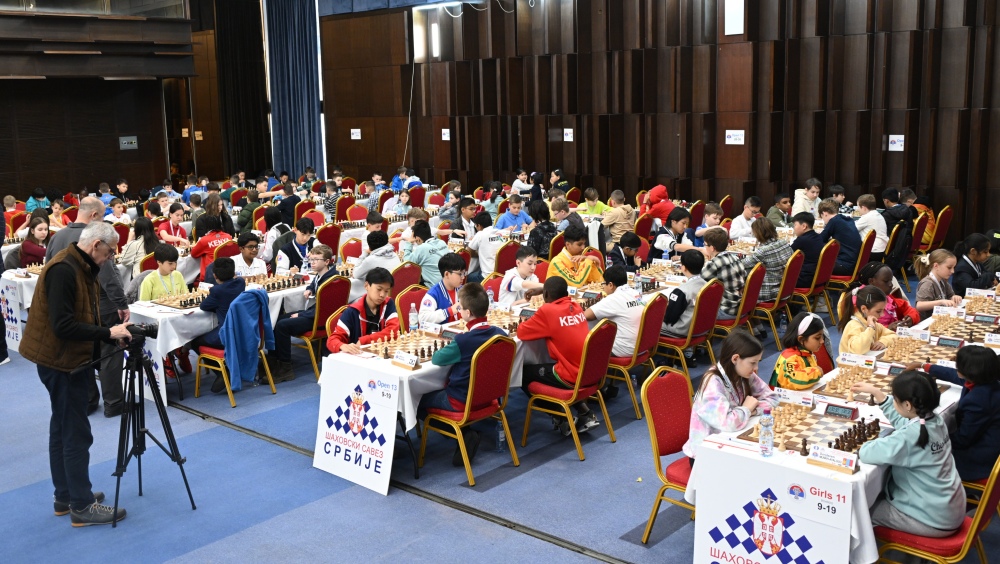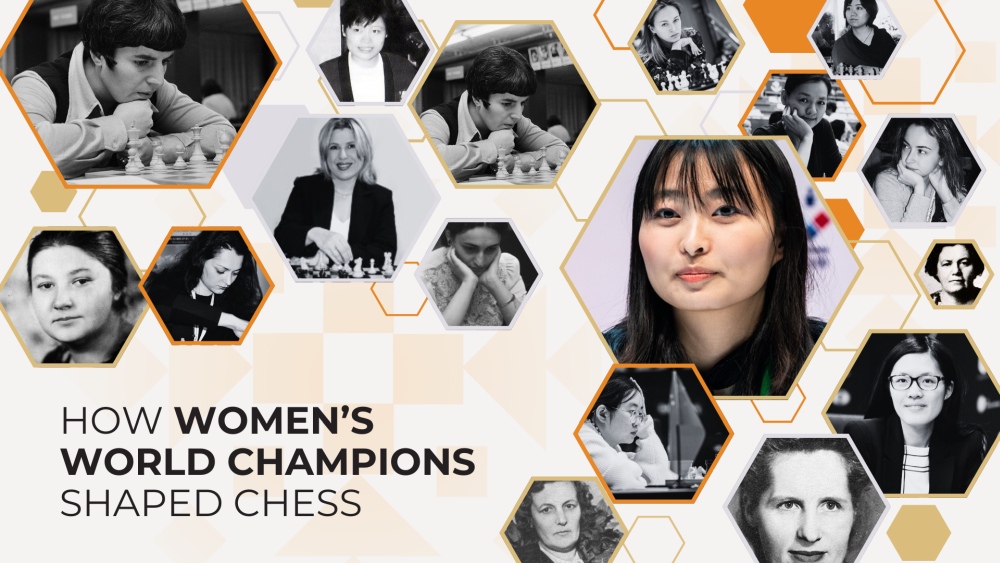FIDE World School Chess Championship 2025 begins in Vrnjačka Banja, Serbia

The FIDE World School Chess Championship 2024 has officially begun in Vrnjačka Banja, Serbia, often referred to as the capital of chess and tourism. The event runs from March 19 to March 29, 2025. During the opening ceremony, which featured a performance by the children’s choir “Vrnjačke Iskrice,” President Andrija Jorgić welcomed all participants and guests on behalf of the Chess Federation of Serbia. FIDE delegate Özgür Solakoğlu also addressed the audience, especially praising the Chess Federation of Serbia and President Jorgić for their efforts in integrating chess into school curricula across the country. The Mayor of Vrnjačka Banja, Boban Đurović, reminded attendees that the city was hosting a major sports event for the third consecutive year and expressed hope that this trend would continue. The Minister of Sports of the Republic of Serbia, Zoran Gajić, delivered an inspiring speech, highlighting Serbia’s rich chess heritage. To conclude the ceremony, Mr. Gajić and Mr. Đurović made the symbolic first move, after which Chief Arbiter Nenad Dorić officially declared the competition open. According to the final figures provided by the organizers, 461 participants from 43 national federations are competing across six age categories: U7, U9, U11, U13, U15, and U17, with separate Open and Girls events. Photos: Chess Federation of Serbia Official website: worldschool2025.fide.com
How Women’s World Champions shaped chess

Women’s chess has come a long way since Vera Menchik claimed the first Women’s World Championship nearly a century ago. The 17 women world champions have shaped the game and symbolized resilience, achievement, and progress—both on and off the chessboard. The Queen’s Gambit series, based on a 1983 book by Walter Tevis of the same name, sparked global interest in chess. In the series, the main character, Beth Harmon, tries to make her name in the male-dominated game, facing social and personal struggles, from being shunned to being resented and discriminated. Beth Harmon’s struggles mirror the real-life obstacles top women chess players have faced—and still face today. A look at some of the key successes and stories of the best women in chess shows how far they’ve come and how they helped shape chess to this day. The first chess queen: Vera Menchik Vera Menchik was the first woman to break the barriers of male-domination in chess, sowing the seeds for other great women players who followed. When Vera Menchik sat down at the chessboard in 1927, little did she know she was about to leave a big mark on history, starting a tradition that has lasted until today. As the first Women’s World Chess Champion, she wasn’t just moving pieces on a board—she was making a statement in a world that barely acknowledged women could play the game at all. Photo: FIDE archive In the summer of 1927, FIDE organized the first Olympiad or, as it was called then – the Tournament of Nations. In addition to the Olympiad, a women’s tournament was organized which was won by the 21-year-old Vera Menchik (with 10.5/11, drawing with Edith Michell) which led to her being declared the first Women’s World Chess Champion. She would go on to become the dominant figure in women’s chess – the longest-reigning women’s world champion, with eight titles – until her life was tragically cut short in the German bombardment of London in 1944. She died as Vera Stevenson (she was married to Rufus Henry Streatfeild Stevenson (1878–1943), a prominent figure in British chess, serving as the Honorary Secretary of the British Chess Federation (BCF). Menchik’s era happened between two world wars, when – similar to today – much of the planet was on the edge and the cause for women’s rights (and the rights of other marginalized groups) was on the fringes of society. During this time, when FIDE was still taking shape, women did not enjoy many privileges or support in chess, but Menchik proved her worth standing shoulder to shoulder with the top male players in tournaments – defeating the likes of Yates, Euwe, Sultan Khan, Reshevsky, and Mieses. Post WW2: The Soviet women dominate Post-war, the Soviet Union became the epicenter of chess. Instead of matches which were practiced in the open (male) events, the Women’s World Champion was determined through tournaments. Lyudmila Rudenko (who was one of top swimmers in Ukraine before turning to chess!), claimed the title in the first post-war tournament, in Moscow in 1950. She lost the crown three years later to Elisaveta Bykova, who taught us all about second chances: Despite losing to Olga Rubtsova in 1956, Bykova reclaimed her title in 1958 and again in 1959, holding it until 1962. Photo: Dmitry Donskoy/Sputnik But it was Nona Gaprindashvili who really shook things up and took women’s chess to the next level. First, she claimed the title in epic style, defeating Bykova (+0 -7 =4) in 1962, at the age of just 21! This led to the launch of a chess revolution in her native Georgia which, to this day, is one of the strongest chess nations in the world, particularly in women’s chess. Gaprindashvili didn’t just dominate women’s chess—she challenged men directly, competing successfully in male-dominated events. Thanks to this, in 1978 she became the first woman in history to be awarded the title of Grandmaster. Despite losing her world crown to compatriot Maia Chiburdanidze in 1978, Gaprindashvili continued competing at the top for another two decades. Her successes also include playing at 12 chess Olympiads (11 times for the USSR and one time for her native Georgia, in 1992, in their first international appearance since gaining independence). A national hero of Georgia and a living legend of chess, Gaprindashvili (now 83) still takes part in chess events (for seniors) and in 2024 toured several countries in the world to talk about the sport. Maia Chiburdanidze and Nona Gaprindashvili Photo: NEWSGEORGIA Then, a new world champion and a new chess milestone for women: another Georgian, Maia Chiburdanidze, became World Champion in 1978, at the age of just 17 – an unprecedented success in women’s chess, matched only by Hou Yifan decades later, and still unmatched among men. After four successful defences of the world crown, her reign ended in 1991 when Chiburdanidze lost the title match to Xie Jun of China (+2-4=9). The first Chinese chess moment The chess world’s center of gravity shifted eastward in the 1990s when Xie Jun clinched the crown – becoming the first ever women’s chess champion from Asia. This victory wasn’t just personal—it signalled a new chess superpower was emerging in the east. Xie’s meteoric rise in chess stands as an example of her country’s rapid global advancement by making giant leaps in short periods. Xie Jun took up chess as a child and by age 10, she was already the champion of Beijing. By the age of 14, she was the girls’ champion of China. In 1991, at the age of 21 – Xie defeated Maia Chiburdanidze to become the first Chinese World Chess Champion. Xie Jun giving a simul at the 2024 World Championship Match Photo: Eng Chin An Then in 1993, the 23-year-old Xie achieved another milestone – the first among nearly 1.7 billion women in Asia to claim the title of Grandmaster. That year Xie successfully defended her world crown against Nana Ioseliani (winning the match 8.5–2.5). Her reign would continue for another three years

